Gedeon Richter Chemical Research Center and Office Building, Budapest
The main site of Gedeon Richter, a pharmaceutical company with a 100-year history, is situated in a densely built 13-hectare area in Eastern Budapest. In 2000, another site of the same size was acquired for development purposes. Investments were started on the basis of a long-range master plan. In the new development area, mechanical and service conduits are driven in underground ducts, therein relieving the area of earlier visual sores.
The most significant unit recently constructed is the Chemical Research Center, the complex of an office building for 230 people and a research lab wing representing state-of-the-art technology with 75 labs for 270 people.
The Laboratory Wing and the Office Wing are connected by a freely shaped, representative entrance hall. From the entrance lobby of the building a five-level high, glazed airspace unfolds itself in which sculptural, snow white spatial circulation bridges float.
The 23-m high glass walls delineating the volume of the entrance hall have a vertical supporting structure using only glass stiffeners and concealed point fixing of the glass panes.
The laboratory space is separated from the computer working area. In the five-sectioned ground-plan, the open office space is located along the elevation; the laboratories are along both sides of the chemical corridor running in the middle with escape routes in two directions.
For the transparency of various procedures, glass walls were installed between the labs and the office space as well as between the labs and the chemical corridor. Also, the glazing of the elevations runs down to the floor level to make the entire building transparent. The transparency of facades is ensured by the ribbon of the so-called monitor windows glazed without visible external supporting frame.
The Office Wing is opened with galleried passages towards the space of the Entrance Hall. The offices are separated from the corridor by glass walls. On the second level, a conference room for 70 people is found, which may be partitioned into two sections or connected to the entrance hall by sliding walls that may be hidden. The facades of the Office Wing are covered with green and grey Indian sandstone, differing from the Laboratory Wing facades.
To comply with the required clearances, the NMR (nuclear magnetic resonance) Laboratory, equipped with strong magnetic instruments, is partly sunken in the ground and is located in the internal courtyard facing the green zone. In the environment of the instruments, vibration-free design and non-magnetisable building materials were required. Each of the sculptural towers covered with metal sheeting accommodates one instrument using a strong magnetic field, connected by a central laboratory space.
With this design our goal was to create a worthy architectural environment for the high-level research work pursued in the building therein also representing the beginning of a new era in the architecture of the research technology.

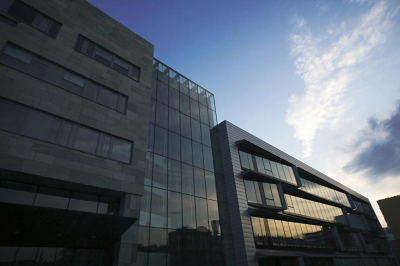
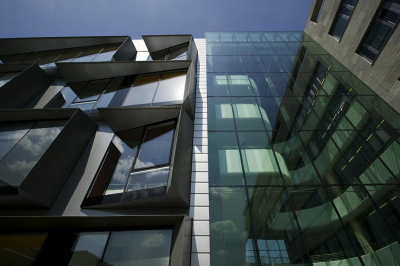
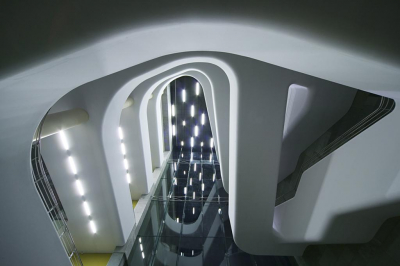
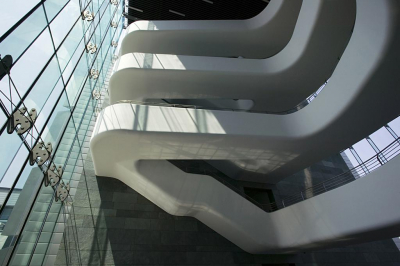

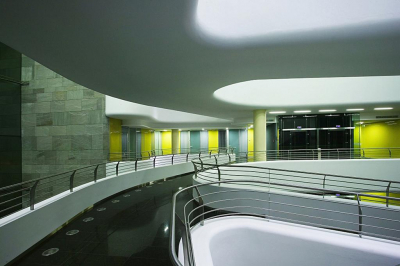
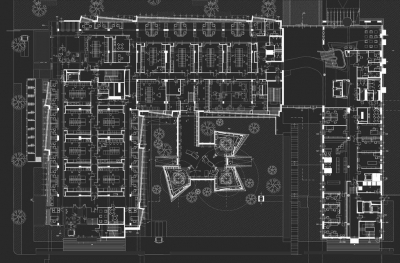
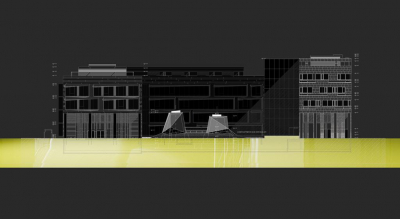
-[Convertido].jpg)
-[Convertido].jpg)
